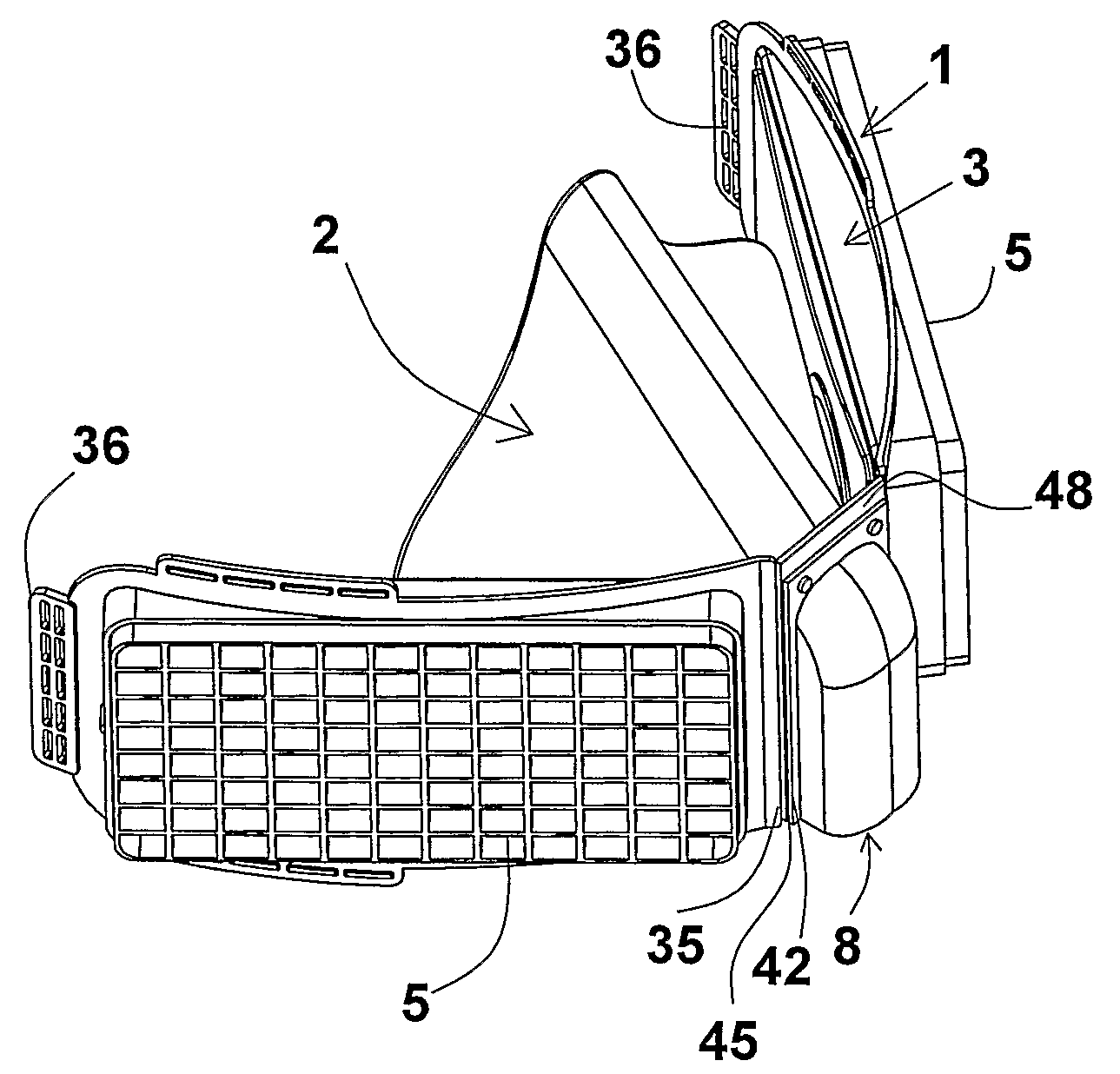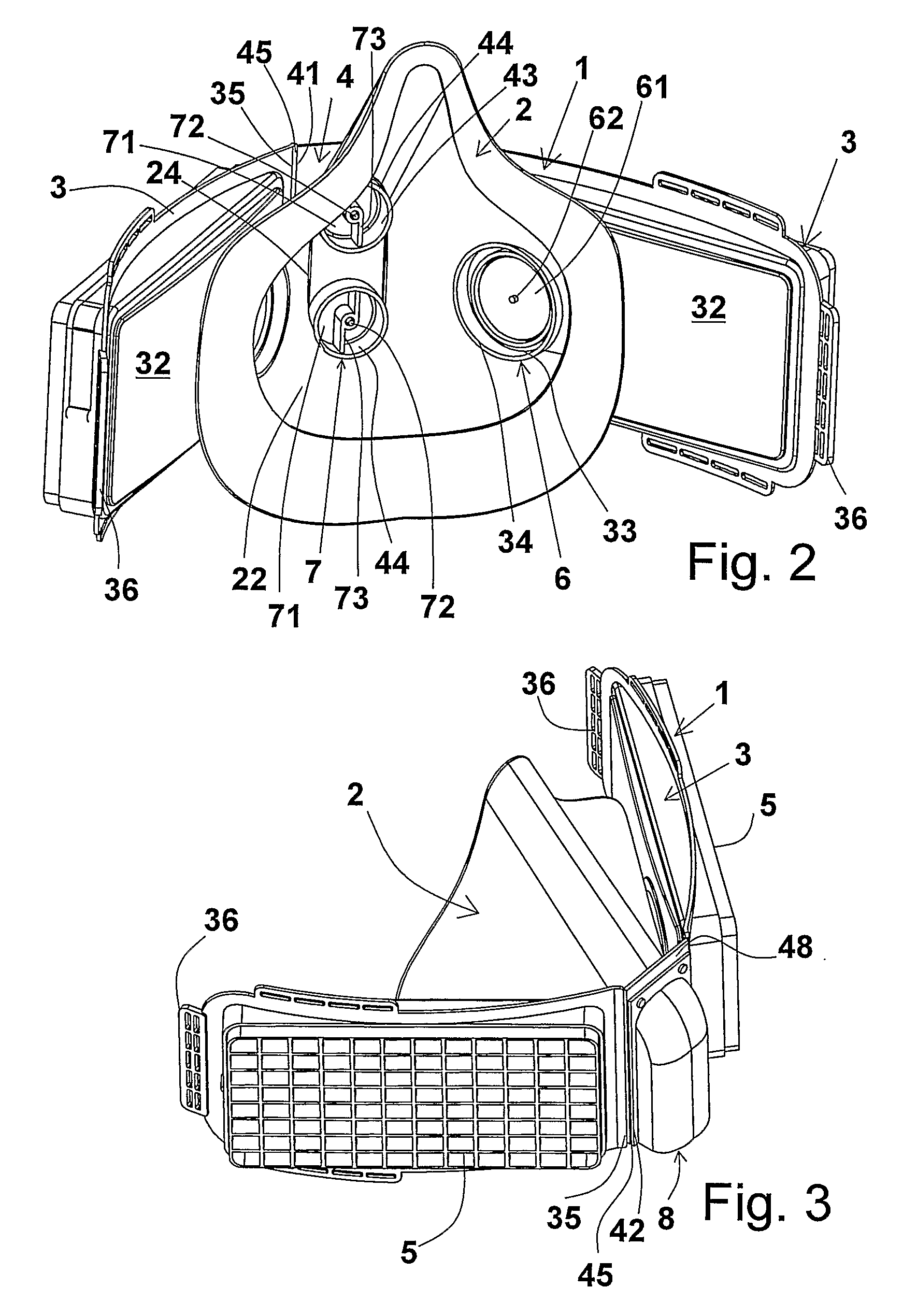Respirator
a technology of respirator and airway, applied in the field of respirator, can solve the problems of cumbersome masks, unsatisfactory storage shape, prolonged or repeated use, etc., and achieve the effect of easy removal
- Summary
- Abstract
- Description
- Claims
- Application Information
AI Technical Summary
Benefits of technology
Problems solved by technology
Method used
Image
Examples
first embodiment
[0047]A filter section 1 and a collapsible oro-nasal mask 2 of a respirator according to the present invention is shown in FIGS. 1 to 5. The filter section 1 comprises two filter supports 3 each hinged to a central support 4. The collapsible oro-nasal mask 2 is resiliently deformable.
[0048]The filter support elements 3 provide generally rectangular sockets 31 in which correspondingly shaped filters 5 are mounted. The sockets 31 are formed on the front side of each filter supports 3. The rear side of each filter supports 3 has a generally flat rear surface 32.
[0049]The walls 21 of the oro-nasal mask 2 define an inner region 22 of the oro-nasal mask 2 within which a wearer's nostrils and mouth are located, in use. The walls 21 of the oro-nasal mask 2 are contoured in order to provide a close fit, and preferably to provide a seal with, the wearer's face (in particular the wearer's nose and chin).
[0050]A circular opening 33 is provided in each filter support, to allow air to pass throug...
second embodiment
[0061]a respirator according to the present invention is shown in FIGS. 6 to 9.
[0062]FIG. 6 shows the respirator, which includes a filter section 1′, an oro-nasal mask 2, a hood 12 and a harness 13. Parts of the respirator of the second embodiment that have the same general configuration and functionality as parts of the respirator of the first embodiment have been given the same reference numbers.
[0063]The filter section 1′ is almost identical to the filter section 1 of the first embodiment, except for the exhale valve cover 8′ of filter section 1′, which has a different shape. The front face 83 of this exhale valve cover 8′ has undulated side edges 84, which allow larger exhale valves (not shown) to be used in the respirator.
[0064]The hood 12 of the respirator can be seen best in FIG. 7. The hood 12 is of thin polyurethane material that can be folded easily, and is welded to form a self-supporting structure. Since the hood 12 can be folded easily, it may be stored in a confined en...
PUM
 Login to View More
Login to View More Abstract
Description
Claims
Application Information
 Login to View More
Login to View More - R&D
- Intellectual Property
- Life Sciences
- Materials
- Tech Scout
- Unparalleled Data Quality
- Higher Quality Content
- 60% Fewer Hallucinations
Browse by: Latest US Patents, China's latest patents, Technical Efficacy Thesaurus, Application Domain, Technology Topic, Popular Technical Reports.
© 2025 PatSnap. All rights reserved.Legal|Privacy policy|Modern Slavery Act Transparency Statement|Sitemap|About US| Contact US: help@patsnap.com



